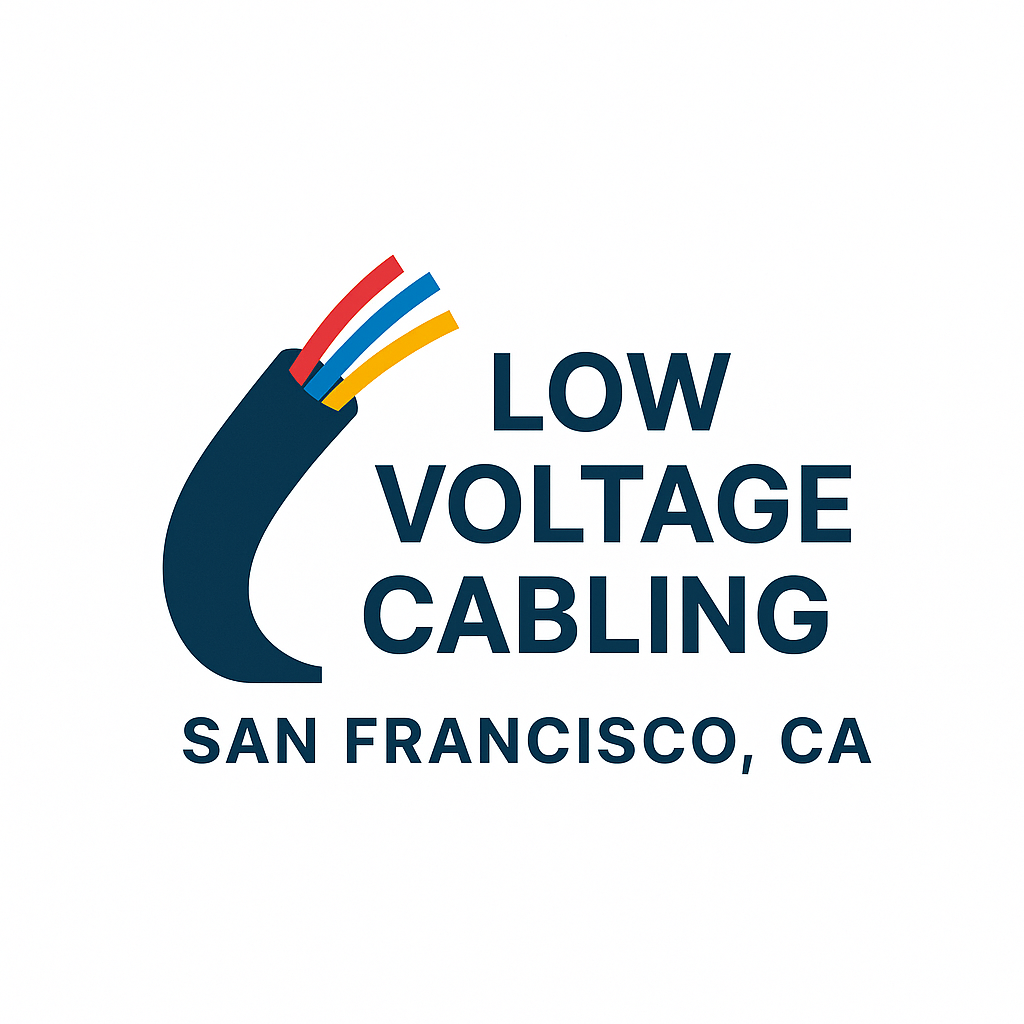Low Voltage Electrical Contractor San Francisco, CA: What You Need to Know
n a technology-driven city like San Francisco, the role of a low voltage electrical contractor is indispensable. From structured networking, security, and AV systems to building automation and access control, these contractors deliver the wiring and system integration that modern properties need. This article delves deep into what a low voltage electrical contractor does in San Francisco, the regulatory requirements in California, cost drivers, best practices, and how to select a qualified contractor, Low Voltage Cabling
You’ll come away with clarity on licensing, scope of work, compliance, common pitfalls, and industry trends in low voltage contracting for the San Francisco area.
What Is Low Voltage Electrical Work?
Low voltage electrical work involves the installation and maintenance of electrical systems operating below 50 volts. These systems handle communication, control, and data functions rather than standard high-voltage power distribution.
Typical examples include:
- Structured cabling and data networks
- CCTV and security camera systems
- Fire alarm and access control systems
- Audio/visual and intercom setups
- Smart home automation
- Building management and control systems
In San Francisco’s fast-paced urban environment, low voltage infrastructure supports commercial facilities, residential buildings, and smart city technologies that enhance safety, efficiency, and connectivity.
Role of a Low Voltage Electrical Contractor
A low voltage electrical contractor specializes in the planning, design, and installation of low voltage systems. These professionals are responsible for ensuring that cabling infrastructure meets all local and national electrical codes.
Key responsibilities include:
- Designing structured wiring layouts for voice, data, and video
- Installing and terminating cables, conduits, and panels
- Testing systems to confirm compliance and performance
- Integrating various systems for seamless functionality
- Maintaining existing networks and upgrading outdated systems
In San Francisco, qualified contractors must also stay current with California Electrical Code regulations and energy efficiency standards, ensuring every installation meets city permitting requirements.
Common Low Voltage Systems in San Francisco
San Francisco’s commercial and residential spaces rely on a wide range of low voltage systems, including:
Security Systems
CCTV, intrusion alarms, and access control systems safeguard both residential and business properties.
Fire Alarm Systems
Certified contractors design and install compliant fire alarm networks that meet local safety regulations.
Networking and Communication
Voice, data, and internet cabling form the communication backbone of offices and institutions.
Audio/Visual and Smart Controls
Home automation, entertainment systems, and building management controls enhance comfort and convenience.
Benefits of Hiring Certified Contractors
Hiring a certified low voltage electrical contractor provides numerous advantages:
- Code Compliance: Ensures installations adhere to California’s state and city electrical codes.
- System Reliability: Proper design and testing prevent connectivity issues and downtime.
- Enhanced Safety: Reduces fire risks and electrical hazards through professional wiring practices.
- Future-Proofing: Contractors use scalable cabling that supports future technology upgrades.
- Project Efficiency: Expert project management minimizes installation delays and cost overruns.
A professional contractor provides both technical expertise and accountability, giving property owners peace of mind.
The Installation Process
Low voltage electrical installation follows a structured process:
- Assessment and Planning: The contractor evaluates your space, identifies system requirements, and designs an optimal wiring plan.
- Permitting: In San Francisco, certain installations require electrical permits and adherence to city-specific standards.
- Cabling Installation: Contractors install conduits, wiring, and network components following approved plans.
- System Configuration: Devices such as security cameras, routers, or panels are connected and programmed.
- Testing and Verification: Systems undergo testing to ensure performance, safety, and compliance.
- Documentation and Handover: The contractor provides detailed reports and system diagrams for future reference.
This methodical approach ensures a dependable, long-lasting system customized to your property’s needs.
Safety and Compliance Standards
San Francisco enforces strict electrical and fire safety regulations. Low voltage contractors must comply with:
- California Electrical Code (CEC)
- National Electrical Code (NEC)
- Building and Fire Department Permitting Requirements
- OSHA Safety Protocols
Adherence to these standards ensures installations are safe, energy-efficient, and legally compliant. Regular inspections and testing also help maintain system integrity over time.
Choosing the Right Contractor in San Francisco
When selecting a low voltage electrical contractor, consider the following:
- Licensing and Certifications: Verify the contractor holds a valid California C-10 or C-7 license.
- Experience: Look for professionals experienced with both residential and commercial projects.
- Portfolio and References: Review past projects to gauge reliability and quality.
- Insurance Coverage: Ensure the company carries liability and workers’ compensation insurance.
- Transparent Estimates: Obtain detailed quotes outlining materials, labor, and timelines.
Choosing a reputable contractor in San Francisco ensures your low voltage systems operate efficiently and safely.
Future Trends in Low Voltage Systems
The future of low voltage electrical systems is shaped by evolving technology. Emerging trends include:
- Smart Building Integration: Combining lighting, HVAC, and security into centralized control platforms.
- Energy Efficiency: Use of PoE (Power over Ethernet) systems to reduce power consumption.
- IoT Connectivity: Devices interconnected through smart networks for real-time monitoring.
- 5G and Fiber Expansion: Faster communication infrastructure enabling data-heavy applications.
- AI and Automation: Predictive maintenance and intelligent control systems.
These innovations make San Francisco’s infrastructure more sustainable, efficient, and interconnected.
Conclusion
Low voltage electrical contractors play a crucial role in maintaining San Francisco’s modern infrastructure. Their expertise ensures that communication, security, and automation systems operate seamlessly while meeting local safety and compliance standards.
Whether you’re upgrading your office network, installing security cameras, or designing a smart home, partnering with a certified low voltage electrical contractor guarantees professional results and long-term reliability.
